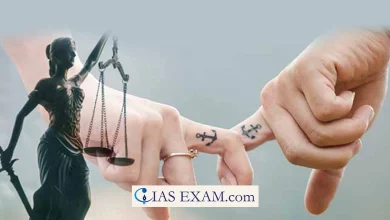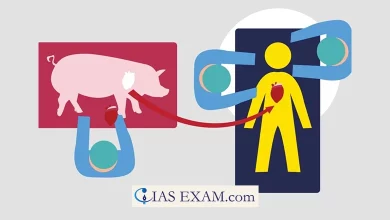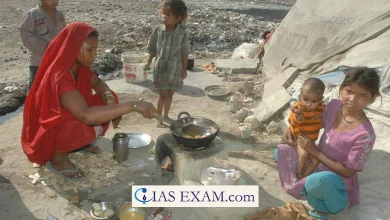Daily Current Affairs for UPSC
Allotment of Symbols to Political Parties
Syllabus- Polity and Governance [GS Paper-2]

Context
Recently, a political party raised questions about the allotment of symbols to ‘registered unrecognised parties’.
About
- Election symbols play a crucial function in the electoral procedure in India, especially considering the sizable population that is still illiterate.
- These symbols serve as a visual representation of political parties and unbiased applicants, making it simpler for citizens to perceive their favored applicants at the ballot.
Allotment of Symbols
- The Election Commission of India (ECI) allots symbols to political parties and contesting candidates as per the provisions of the Election Symbols (Reservation and Allotment) Order, 1968.
- A recognized political celebration has a reserved symbol that is not allotted to any other candidate in any constituency.
Key Criteria
- Recognition of Parties: A party is recognized as a ‘national’ or ‘state’ party under the provisions of the Symbols Order by the ECI.
- The standards for recognition on the State degree includes winning a certain range of Lok Sabha or Legislative Assembly seats or securing a certain percent of votes polled in a general election.
- Allotment of Symbols: Symbols are allocated to political parties and contesting applicants as per the provisions of the Symbols Order by way of the ECI.
- A recognized political party has a reserved symbol that isn’t allocated to another candidate in any constituency.
- For Registered but Unrecognised Parties: One of the free symbols is allocated as a common symbol all through an election if that celebration contests in Lok Sabha constituencies or in 5% of seats to the Assembly of a State as the case can be.
- Rule 10B of the Symbols Order: It presents that the concession of a common free symbol shall be available to a ‘registered unrecognised party’ for two general elections.
- Furthermore, a celebration will be eligible for a not unusual symbol in any next preferred election if it had secured at least 1% of votes polled in the State at the previous event when the party availed of this facility.
- Application for Symbol: Such an unrecognised party should however apply for a symbol on every occasion in the prescribed layout.
- It can be made any time throughout the duration setting out six months previous to the expiry of the time period of the Lok Sabha or State Assembly because the case can be.
- First-Come-First-Served Basis: The symbols are thereafter allotted on a ‘first-come-first-served’ basis.
- Free Symbols: An unbiased candidate or a person contesting on behalf of an unrecognised political party has to method the Commission and get a symbol allocated from the list of ‘free’ symbols available.
- A candidate should provide 3 symbols from the free list at the time of submission of nomination papers, one of which will be allocated to him/her.
Significances of Election Symbols
- Aid for Illiterate Voters: The main cause of giving symbols to parties is to assist illiterate citizens, who can’t examine the applicants’ names, to discover their candidate on the ballot paper and facilitate their vote casting by looking at the symbol.
- Political Identity: Symbols nowadays constitute a higher position in India’s electoral politics, with each denoting allegiance to a selected ideology and the related followership of a national leader.
- Distinguishing Parties: Symbols permit political parties to differentiate themselves from others.
- They are particularly important in a country like India where there are numerous political parties.
- Symbol Reservation: In the case of a recognized political celebration, the Commission lets in it to ‘reserve’ a symbol.
- For example, if a political party regarded in a specific State wishes to contest in elections in every other State, it can ‘reserve’ the symbol being used by it.
Conclusion
- Election symbols are a crucial part of India’s democratic manner, serving as a visual aid for citizens and an illustration of political parties and applicants.
- The procedure of allotment and reservation of these symbols by means of the ECI ensures a fair and equitable system that upholds the principles of democracy.
Source: The Hindu
UPSC Prelims Practice Question
Q.Consider the following statements:
- In India, there is no law restricting the candidates from contesting in one Lok Sabha election from three constituencies.
- In 1991 Lok Sabha Election, Shri Devi Lal contested from three Lok Sabha constituencies.
- As per the existing rules, if a candidate contests in one Lok Sabha election from many constituencies, his/her party should bear the cost of bye-elections to the constituencies vacated by him/her in the event of him/her winning in all the constituencies.
Which of the statements given above is/are correct? (2020)
a. 1 only b. 2 only
c. 1 and 3 d. 2 and 3
Ans – “b”





.png)



